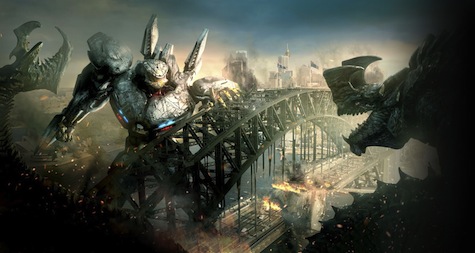Some audiences have found the trailers to Pacific Rim confusing. Giant monsters and giant robots, what? I’ve been pumped from the first trailer featuring a giant robot rocket-punching a giant monster. Pacific Rim relies on some tips of its spectacularly large hat to various precursors from monster movies and science fiction cinema. It presents a particular case of the more general problem that creators of genre fiction face—how much do I lean on a shared knowledge of popular (geek) culture?
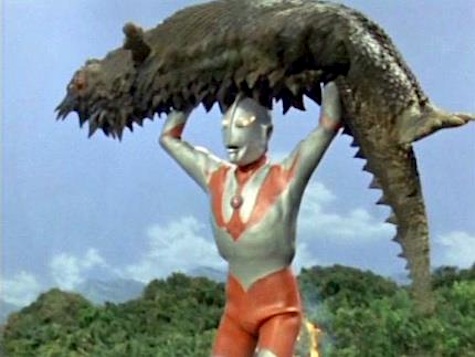
1. The obvious precursor for Pacific Rim is the Kaiju tradition. The monster aliens in Pacific Rim would be daikaiju, which are the massive city-destroying versions. See this list of ‘primer films’ that Variety has assembled. Number one is Godzilla (1954) the most well-known daikaiju. Daimajin (1966) features a giant samurai statue that comes to life to combat an Iago-like usurper, see also the Ultraman (1966) TV series. Most of the audiences going to see Pacific Rim would’ve seen the recent Hollywood giant monster efforts, including the 1998 remake of Godzilla and the 2008 Cloverfield. The way an audience is shaped relies on much more that a single obvious genre so as to be receptive to a new film, however.
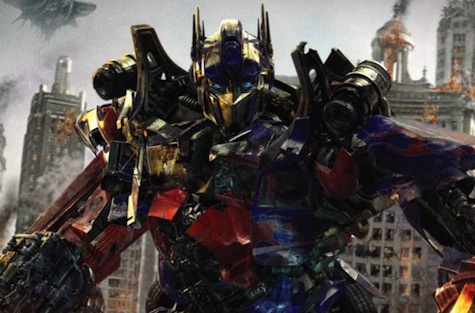
2. Most critics will compare Pacific Rim to Michael Bay’s live action translation of the Transformers franchise. (Search for Transformers vs Godzilla mash-up.) Transformers itself is a massive swirling franchise of multiple animated series, comics, videogames and now films. Transformers did have some massive city-sized representatives, such as Metroplex. The critics will be comparing Pacific Rim to Transformers because of the use of giant robot suits and the particular kind of spectacular violence, but there really are not any tangible connections beyond a superficial similarity.
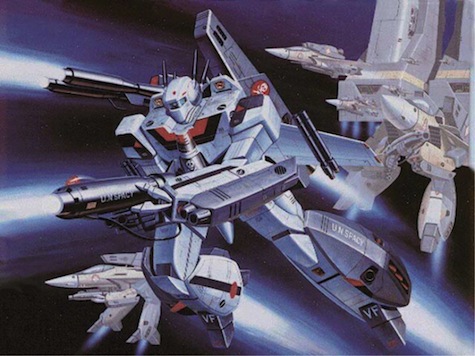
3. Japanese popular culture provides us with a closer approximation of the giant robot suits from Pacific Rim in the form of the ‘mecha’ genre. Audiences need some awareness of mecha to appreciate why having two pilots is something different. Event the nomenclature of ‘pilot’ is derived from the mecha genre. A curious example here is one of my favourite popular culture texts of all time, Robotech. I was fascinated with Robotech as a child and then when Madman in Australia released the DVD box sets several years ago I purchased them as they were released. Now I am fascinated by Robotech because of the relatively unique way the production company Harmony Gold translated three separate Japanese anime series into a single American cartoon series.
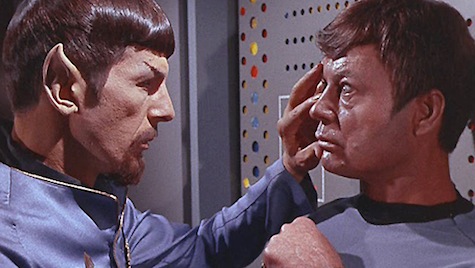
4. The way the two pilots comes together in the “Drift” has precedence from Star Trek’s mind meld, famously used in the relation between Spock and Kirk, because of the required intimacy. Henry Jenkins has argued that the most illustrative example of slashfic is imagining the scene in Wrath of Khan where Spock is dying and he is separated from Kirk by a plane of glass what would happen without the glass. The “Drift” of the Jaeger pilots is similar but with a technological twist. It is closer to the intimacy achieved in the climatic scene of Ghost in the Shell. The cyborg Major Kusanagi ‘dives’ into the mind of the sentient program dubbed The Puppet Master. The result is an exchange and melding of their two ‘ghosts’. The dramatic tension of Pacific Rim, Del Toro has argued, comes from the intimate exchange of personal details of the two Jaeger pilots.
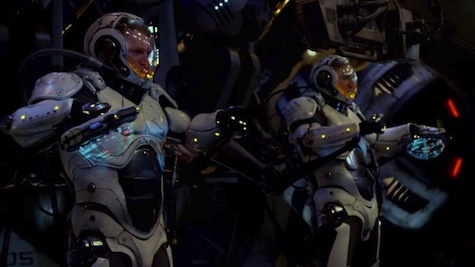
5. Most contemporary audiences will be comfortable with cross-cultural adaptations of particular texts. Pacific Rim is different in that it is a cross-cultural text that translates elements of the generic conventions into a new kind of adaptation. Early Kaiju films were created in the shadow of World War II and the use of atomic weapons, hence nearly all the monsters were mutations as a result of radiation. Does Pacific Rim also have this allegorical dimension? In the film, most of humanity wants to disband the collective effort that witnessed each major nation create a Jaeger. Indeed the US is creating a massive wall along its west coast to keep the Kaiju out. The Kaiju in Pacific Rim are ‘alien’ forces of nature and it is not hard to see the allegorical dimension of Kaiju also being adapted and translated in this context. The difficulties of international cooperation in combating the Kaiju of ecological disaster articulated through the difficulty in syncing ‘pilots’ of massive industrial machines.
Audiences are not cohesive or homogeneous totalities any more, if they ever were. Being an audience is as much a cultural performance—in the sense of being able to attentively listen or watch a given cultural text in a relatively sophisticated manner—as the text itself is. Audiences need to be trained so as to have the cultural ‘know how’ or ‘literacies’ so as to be able to appreciate complex assemblages of translation and adaptation of cross-cultural texts, such as Pacific Rim. Above is a map of some of the cultural ‘know how’ I am bringing to bear in my experience of Pacific Rim, but the map will be different for every single person in the audience.
Originally published July 11 on Momentum Books’ Blog.
Glen Fuller is an assistant professor of Journalism and Communication at the University of Canberra. He can be found on twitter at @Eventmechanics.










